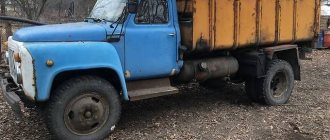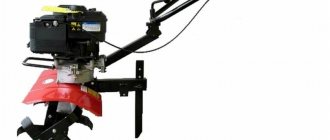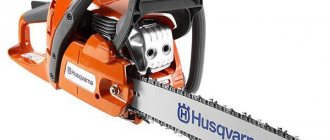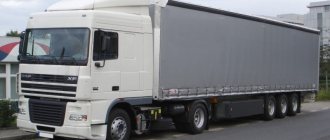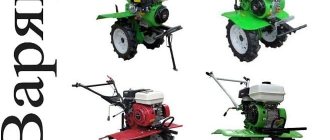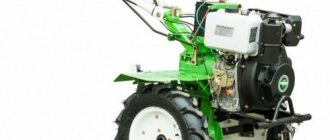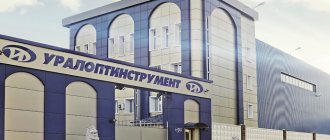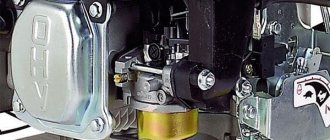An integral attribute of any modern logistics company are forklifts. Electric forklifts are especially common. They are quite versatile and can be used in any conditions. Unlike gas and diesel models, their operation is much cheaper. Among the areas of application of this technology are various warehouses with food or any other products. But they have also found wide application in small industrial premises, ports and aviation terminals, where it is impossible to operate gas and diesel equipment due to the presence of exhaust gases.
Loaders are the main warehouse equipment that greatly facilitates maintenance and work with various cargoes. It uses a pitchfork as its main tool. But in addition to them, the loader can be equipped with other grips, depending on the type of cargo. So, along with forks, traverses, hooks, retractable forks, and pushers can be used.
Types of equipment
Three-wheeled electric forklifts and four-wheeled counterparts can be distinguished. The first, based on their characteristics, have a load capacity of up to two tons. They are equipped with a special steerable axle that swings around a longitudinal axis.
The steered wheel can rotate around its axis vertically at an angle of no more than 90 degrees. This allows the turning radius to be significantly reduced. Due to this, the loader has high maneuverability, which is so necessary in narrow warehouse spaces.
Who can operate forklifts
Although forklifts are used in closed warehouse areas, a license to drive special equipment is still required to operate such equipment. This requirement is established to ensure labor safety. In particular, the loader operator requires a category “B” (in some cases “C”) tractor driver’s license and at least two years of driving experience.
Four Wheel Loader: Features
Despite all the advantages of three-wheeled models, four-wheeled vehicles are more common. This type of equipment can be seen in most warehouses, workshops, and factories. These are more universal models, which, unlike their three-wheeled counterparts, have a greater load capacity. They are also quite maneuverable. Of course, this maneuverability cannot be compared with three-wheeled counterparts, but these models have separate drive to the drive wheels.
Among the most popular and popular models are units with a carrying capacity from 0.25 to five tons. More powerful equipment is also used - up to ten tons or more.
Advantages of electric forklifts:
- One of the important advantages of an electric forklift is that the engine and all attachments of the machine are powered by a traction battery. It follows from this that the service life of the forklift will depend on the battery life.
- This type of equipment requires less time and money to replace the power source, as well as for service maintenance in general.
- The electric forklift does no harm at all when working in enclosed spaces and fully complies with international environmental safety standards (it does not emit harmful emissions, unlike gasoline, diesel or gas forklifts).
- An electric loader has a low noise level, which allows maintenance personnel to remain near the operating machine for a long time.
Frame
The main element in the design of a loader is the frame. It is fixed and rests on the front and rear axles. In this case, the front axle is the drive axle, and the rear axle is the steered axle. The controlled part is connected to the loader frame using springs.
There is a hydraulic cylinder on the drive axle. It provides the ability to attach an articulated lift to the frame. The hydraulic lift itself consists of two frames - an outer one and a movable inner one. The last part of the structure can move relative to the main one in a vertical plane. The main frame may have a slight slope - often no more than five degrees. The frame can be tilted both forward and backward. In this case, the backward tilt can be performed no more than ten degrees. This design of an electric forklift makes it easier to grab loads using forks. By tilting backwards, the stability of the loader is improved when moving with loads.
Chassis
“Give me a fulcrum on which I can stand, and I will move the earth,” said Archimedes. Indeed, the support is the basis of any lever mechanism. This applies equally to a forklift: its load capacity and maximum permissible loads directly depend on its frontal and lateral stability. The necessary dynamic stability is achieved if the chassis and superstructure are designed so that all wheels of the vehicle are in constant contact with the road surface. This requires the largest possible wheelbase and the lowest possible center of gravity. For this reason, modern forklifts with the same chassis length have smaller wheel diameters and a longer wheelbase compared to previous models. Electric forklifts, in which the battery is located directly on the chassis in the middle of the wheelbase, have a very low center of gravity and, as a result, high stability. Statistics from the late 1990s show that about 25.3% of all forklift fatalities are caused by tip-overs and only 14.4% by falling loads. This is why the European Union standard EN 1726 places very stringent requirements on manufacturers: to reduce the risk of lateral and frontal rollovers during normal operation, forklifts must pass regulatory tests for stability and have no permanent deformations.
The highest safety requirements apply to heavy-duty forklifts and machines used for work in open areas. For them, a rigid welded one-piece chassis is a mandatory performance standard. In this case, the engine, gearbox and differential should be installed as low as possible. Serious progress in ensuring the stability of forklifts has been the SAS (System for active Stability) active stabilization system, which is equipped with the 7th series of Toyota forklifts. SAS intervenes proactively in situations where the forklift is in danger of tipping sideways, forwards or backwards.
Based on signals from sensors, the system analyzes whether the forklift is in a potentially dangerous situation and, if necessary, activates a safety function. The operating principle of the touch sensor, which is used to measure sideways deviations of the vehicle, is the same as that of a satellite navigation system.
Power point
An electric motor is used as the power unit in these machines. Torque is transmitted to the front drive axle. The engine is bolted securely to a flange located on a steel casting of the drive axle housing. A bevel gear is installed at the end of the motor shaft using a key connection. It meshes with a gear, which is secured to the differential housing with rivets. The differential housing is mounted on two bearings. Inside the differential there are two bevel gears with shanks, as well as two satellites. They both sit on the same finger.
There is a hole with splines in the gear shank; the axle shaft is inserted into it. At the other end of the axle shaft (also on splines) a gear is fixed - it has internal teeth. It is connected to a massive cast iron wheel using rivets.
When the operator turns on the electric motor of an electric forklift, the torque is transmitted through several gears to the driving pair of wheels. The wheels are mounted on tapered roller bearings, securely mounted on a fixed axle. This axle is pressed into the axle housing. The bearings are hidden under a cast iron cover. The brake system discs are mounted on the side flanges of the front axle. A double-row spherical bearing is used as a support for the drive shaft in many models. It is installed in a fixed disk.
Electric forklifts
Electric forklifts (Fig. 5) are the most common universal lifting and transport machines designed to mechanize loading and unloading and intra-warehouse operations with all kinds of packaged cargo, as well as cargo in packages and on pallets. The use of electric motors as power units in the design of electric forklifts allows them to be operated primarily in enclosed spaces (closed warehouses, workshops, wagons, etc.). Since the electric motors in these machines are powered, as a rule, by a battery installed on the forklift, electric forklifts are sometimes called battery-powered.
Electric forklifts are distinguished by high maneuverability and a wide range of operations (grabbing cargo, lifting it and moving it, stacking, releasing cargo, loading cargo onto vehicles and wagons, unloading them, etc.), which makes them possible to use in a wide variety of operating conditions.
Most models of electric wheeled forklifts, which are usually manufactured with a small diameter, have alloy tires. To operate electric forklifts in warehouses and loading and unloading areas, it is necessary to have a hard (concrete or asphalt concrete) and level floor covering. In addition, to charge the batteries of electric forklifts, loading and unloading points must have charging stations equipped with appropriate current rectifiers.
In the designs of domestic electric forklifts, batteries made up of alkaline iron-nickel batteries with a capacity of 300 to 500 Ah with a rated voltage of 24 to 40 V are used to power electric motors. Foreign models of electric forklifts often use acid batteries.
The general design diagram of a conventional electric forklift provides for the presence of the following main components and assemblies: a chassis frame made in the form of a supporting body; driving front axle, rear steering axle; forklift; electric motor of movement; electric motor of the lifting mechanism; hydraulic drive, consisting of a pump, a hydraulic distributor, two tilt cylinders for the forklift, a carriage lift cylinder, an oil tank and fittings; steering; battery; control equipment.
A load lifter with a telescopic frame and a carriage for attaching working devices is hinged on the transverse fork of the body frame between the front drive wheels. Using two hydraulic cylinders, the forklift can tilt forward up to 3° and backward up to 10°.
The main load-handling working element of electric forklifts is the forks, designed to work primarily with packaged loads on pallets. In some cases, electric forklifts are equipped with a blockless boom, grab, pin, etc., as well as a pusher driven by a hydraulic system.
The driving wheels of the electric forklift are equipped with shoe brakes with two independent drives - hydraulic, operated by a foot pedal, and mechanical, operated by a hand lever. Applying the brakes automatically breaks the electric drive control circuit and the drive axle engine stops working.
The hydraulic drive diagram is shown in Fig. 6.
From tank 1, spindle oil is sucked through a flexible hose 2 by pump 3. From the pump through hose 10, the oil flows to a spool-type hydraulic distributor 9, from where through hose 4 to lift cylinder 5, through hoses 11 and 12 to tilt cylinders 13, hoses 7 and 8 - 6 working devices (pusher, grab) into the cylinders. From the cylinders, the oil returns to the tank through a hydraulic distributor and flexible hose 14. The hydraulic distributor and working equipment of the electric forklift are controlled using levers located at the driver’s workplace.
img
Electric forklifts 4015M and EP-0.5 with a lifting capacity of 500 kg are mounted on a three-wheeled chassis with a driven and steered rear wheel, ensuring their high maneuverability.
The forklift of the 4015M loader is made with a retractable internal frame and is designed in three versions: with fork lifting heights of 1.8, 2.8 and 4.5 m. For the EP-0.5 loader, the fork lift provides fork lifting to a height of 2.8 m.
The speed control of the loaders is stepless and is ensured by the presence of a coal-oil controller.
Drivers operate the forklifts using the steering wheel, speed control handle and hydraulic distributor control levers.
The 4015M electric forklift, in addition to the forks, is equipped with a blockless boom with a hook, side grips, a load pusher with a grab and a tilter, which allows you to rotate the load around the longitudinal axis by 180°. The loader lifts the forks to a height of 1400 mm without increasing the overall height of the loader.
Both models of forklifts can be used for loading and unloading various piece cargo, including packages, small-sized containers, etc., onto vehicles not only from ground level, but also driving directly onto the platform (if warehouses are equipped with ramps or special overpasses) .
Electric forklifts 4004 with a lifting capacity of 750 kg are the most common in our country. Their production was mastered in two modifications with a fork lift height of 1600 mm (model 4004) and 2800 mm (model 4004A).
Loaders 4004 and 4004A are designed for loading and unloading piece and bulk cargo into cars and other vehicles, as well as for moving short distances and stacking cargo.
Loaders are convenient for working in enclosed spaces and on areas with hard, smooth surfaces.
Loaders 4004 and 4004A are self-propelled universal lifting and transport machines. They differ from each other only in the design of the forklift frame and the hydraulic cylinder for lifting the load.
Loaders are made with electric motors powered by an alkaline iron-nickel battery and are the safest in terms of fire when working in enclosed spaces and warehouses.
Two DC electric motors are used in the traction and lifting mechanisms. The installation of these electric motors ensures the independence of the operation of these mechanisms.
The loader's lifting mechanism is driven by a hydraulic system with a vane pump.
Drive wheels - front; rear wheels are steerable.
The lifting mechanism, together with a telescopic frame and a carriage for attaching replaceable working equipment, is mounted on the chassis frame between the front drive wheels. By means of two hydraulic tilt cylinders, the forklift frame can tilt forward when picking up cargo and backward when transporting it.
The forklift carriage can be equipped with forks, a load pusher, a blockless boom, a grab for bulk materials (grab) and a side grab.
Replaceable working equipment (devices) are mounted on the forklift carriage using simple grips; replacing one device with another is simple.
The loader is equipped with shoe brakes acting on the drive wheels, with two independent drives: hydraulic (foot) and mechanical (manual).
The control levers and pedals are concentrated at the control station near the driver's seat.
The longitudinal stability of the loaders is ensured by the location of the battery under the rear axle and a counterweight mounted behind the rear wall of the body.
Electric forklifts EP-103 and EP-106 are produced to replace electric forklifts 4004. Their load capacity is 1 ton. The designs of electric forklifts are almost the same: the electric forklift EP-103 has cast tires, and the electric forklift EP-106 has pneumatic tires.
Both models can be equipped with one of three load lifters, allowing you to lift the load to a height of 1.8, 2.8 and 4.5 m. In this case, the free lifting height of the load (without increasing the height of the electric forklift) is 200 mm.
In addition, each model can be manufactured (by special order) with a load lifter (special), with the help of which the load is raised to a height of 1.4 m without increasing the overall dimensions and to a height of 2.8 m with the frame extended.
Depending on the lifting height of the load, electric forklifts are assigned the following indices: EP-103-1.8; EP-103-2.8; EP-103-4.5; EP-103-2.8 special; EP-106-1.8; EP-106-2.8; EP-106-4.5; EP-106-2.8 special.
Electric forklifts with low lifting loads are designed for loading and unloading covered railway cars, for stacking cargo to a height of up to 1.8 m in factory workshops and warehouses.
Electric high lift forklifts are designed for lifting, transporting and stacking loads to heights of up to 2.8 and 4.5 m respectively.
The electric forklift can be equipped with a load pusher, a blockless boom, an offset carriage, a pin, a rotary carriage (in the horizontal plane), a side grip, a tilter, and a safety frame.
Replacement equipment is not included in the electric forklift package and is supplied only upon separate order.
Electric forklifts EP-103 and EP-106 are designed for loading and unloading, stacking and transporting cargo at temperatures from -30 to +40° in indoor and outdoor areas with hard and even surfaces.
At temperatures below - 10°, it is recommended to start work in heated rooms.
The power source of the electric forklift is an alkaline iron-nickel battery with a voltage of 40 V and a capacity of 300 Ah.
The lifting mechanism is driven by a hydraulic system with a gear hydraulic pump.
Two DC electric motors for the movement and lifting mechanisms ensure the independent operation of these mechanisms.
The main components of the electric forklift are: chassis frame, made in the form of a supporting body, drive axle, lifting mechanism, rear axle, hydraulic drive, electrical equipment, steering, braking device.
The front wheels of the electric forklift are driven, the rear wheels are steered. The drive axle is attached to the body in the front part. The rear part of the body rests on the rear axle beam through two semi-elliptic springs.
A lifting mechanism with a telescopic frame and a carriage for installing working devices is hinged on the body between the front drive wheels. Using two hydraulic cylinders, the forklift frame can tilt forward when picking up a load and backward when transporting it. The lift carriage is suspended on a plate chain thrown over a smooth roller mounted on the head of the lift cylinder plunger. The chain is attached at one end to the carriage and at the other to the cylinder body. Various replaceable working devices can be installed on the forklift carriage: forks, load pusher, rotary carriage, etc.
The electric forklift is equipped with a hydraulic foot brake that acts on the drive wheels and a manual mechanical brake that acts on the travel motor shaft.
Applying the hydraulic and mechanical (parking) brakes automatically breaks the electric drive control circuit and the travel motor stops working.
The steered wheels are turned to the required angle by means of an automobile-type steering wheel, a pendulum lever mounted on the rear axle beam, and a rod system - a longitudinal steering rod and transverse steering rods of a “split” trapezoid.
The electric forklift control levers and pedals are concentrated at the control station near the driver's seat. On the right side of the steering column there are pedals for the hydraulic brake and the controller. The handbrake lever is mounted to the right of the driver.
The direction change switch is located to the right of the steering column. The forward position of the switch handle corresponds to the forward movement of the electric forklift; when moving the handle back, reverse gear is engaged.
The lifting mechanism of the electric forklift is controlled using a hydraulic distributor mounted on the front panel.
The longitudinal stability of the electric forklift is ensured by the location of the battery and counterweight above the rear axle.
Electric forklifts KVZ-0.2 and KVZ-0.4 are designed for various loading and unloading operations at bases and warehouses, in workshops and on access roads.
The electric forklift transports, lifts and stacks piece and containerized cargo weighing up to 1.5 tons.
An electric forklift is a four-wheeled self-propelled machine that has a mechanism for lifting and tilting a load, and a gripping device (forks).
The gripping device is easily removed; it can be replaced by a bucket, crane boom or other special device.
The energy source for the electric forklift is a 500 Ah battery with a voltage of 30/12 V.
An electric forklift with a battery can operate in enclosed spaces when transporting chemical products; it is fire safe.
Table 7. Technical characteristics of electric forklifts
| Index | Electric forklifts | |||||
| 40I5M | 4004A | EP-103 | KVZ-02 | EP-201 | EP-301 | |
| Load capacity, t | 0,5 | 0,75 | 1,0 | 1,5 | 2,0 | 3,0 |
| Maximum speed of lifting loads on forks, m/min | 10,00 | 10,00 | 9,10 | 4,25 | 8,20 | 8,60 |
| Maximum permissible distance from the center of gravity of the load to the backrests (at maximum use of the load capacity), mm | 500 | 400 | 500 | 500 | 600 | |
| Minimum turning radius by outer overall dimension, mm | 1200 | 1550 | 1600 | 2100 | 2050 | 2260 |
| Highest speed of cargo movement, km/h | 8,0 | 8,5 | 9,4 | 6,5 | 9,2 | 9,0 |
| Overall dimensions, mm: | ||||||
| length with forks | 2250 | 2400 | 2500 | 2970 | 3150 | 3605 |
| width | 900 | 910 | 910 | 1000 | 1350 | 1484 |
| height with forks lowered | 1950 | 1910 | 1995 | 1480 | 2100 | 2175 |
| Total weight of the machine without | ||||||
| cargo, kg | 1350 | 1800 | 2150 | 2800 | 3573 | 5500 |
Instead of electric forklifts KVZ-02 and KVZ-04 c. Currently, they produce electric forklifts EP-201 and EP-202 with a lifting capacity of 2.0 tons. The designs of these forklifts are the same, except that the electric forklift EP-201 is equipped with pneumatic tires, and the electric forklift EP-202 is equipped with massive ones.
A normally open locking contact is installed under the driver's seat, which opens the control circuit if the driver does not take a seat on the car.
In the front part of the loader, a lifting mechanism with a carriage is installed on hinges for securing replaceable load-handling devices.
At the consumer's request, the loader is equipped with devices for lifting loads to a height of 1.8; 2.8 and 4.5 m. The main version of the electric forklift is designed for a lifting height of 2.8 m.
The versatility of the loader is ensured by replaceable lifting devices: tilter, side grip, fork, multi-pin grip, pin, boom, side shift carriages and bucket.
Replacement equipment is supplied upon request.
Electric forklifts EP-301 with a lifting capacity of 3 tons are structurally designed in the same way as electric forklifts EP-201.
The technical characteristics of the electric forklift are given in table. 7. Car loaders Machines for processing mineral fertilizers
Power supply
The battery for the forklift is the most important part of this unit. The battery can be various types of batteries, as well as a three-phase current network (AC and DC). The most widely used batteries are those consisting of several batteries. Their number can reach several dozen. The batteries used are acid or alkaline, depending on the forklift manufacturer. But it is the alkaline elements that are more applicable. In addition to batteries for the loader, alternating current, connected via a cable, can be used as a power source. This is a flexible cable, the length of which is 20-30 meters.
Nichiyu FB-75
This loader has excellent speed characteristics. He is able to quickly gain the desired speed. This model also copes well with slopes and other uneven surfaces. It, unlike other similar models, has a high degree of electrical safety. All electrical power parts are located inside. Therefore, you can operate this equipment even during rain.
The basic configuration includes a mast with a “soft landing” function, electric power steering, an AC motor, batteries, a recovery system, a “wet” braking system, optics and turn signals.
Why are four-wheel electric forklifts in greater demand on the market than three-wheel electric forklifts?
Even though forklift engineers are trying their best to improve three-wheel machines today, four-wheel electric forklifts are still more popular on the market than their competitors. Why? Yes, in comparison with three-wheel equipment, four-wheel forklifts lose significantly in maneuverability, but they also win in other indicators. For example, they are endowed with better speed characteristics, better stability and the highest load capacity.
EP-103
Japanese electric forklifts are not always available to everyone. And then you have to choose among domestic models. The EP-103 model is considered one of the best. These units are manufactured in Yekaterinburg at. This is a well-balanced technique that has a low cost. EP is easy to maintain. The characteristics of this machine fully meet all consumer needs. Its carrying capacity is 1000 kilograms. The EP-103 electric forklift can lift loads to a height of up to three meters. The speed of movement is nine kilometers per hour. The engine has a power of 3.55 kW.
Batteries
The battery for electric forklifts naturally requires regular recharging. And there are about 1500 such charge-discharge cycles. The service life of the battery, subject to operating rules, is about 4-5 years.
There are many manufacturers of batteries for forklifts. Therefore, it is necessary to choose reliable and high-quality batteries, having certain information about them.
First of all, they are divided into serviced and unserviced. For the former, by the way, an electrolyte is required, which must be selected for a specific battery. This is best done for you by the company’s specialists supplying components for electric forklifts.
Now about the classification of batteries.
Classic (acid) batteries (EPzS and EPzB) These are traction batteries. Very reliable and meet the highest performance requirements. Ideal for multi-shift operation, with a large power reserve. Suitable for all types of electric forklifts. Charging time – 5.5-14 hours.
Heavy Duty Batteries (ECSM) 10% more powerful than conventional batteries by modifying classic technology. These batteries are recommended when work requires high power and long runtime. Battery charging time is 8-14 hours.
Low-maintenance Liberator batteries Batteries of this type are a completely new generation. They combine the advantages of a classic battery and the latest technologies. This allows them to be used in extreme conditions while maintaining reliability. Charging time – 8-14 hours.
Maintenance-free (gel) sealed batteries (EPzV) Do not require recharging throughout their entire service life. The most environmentally friendly in the line of batteries, because they have virtually no gas emissions. Charging time – 12-14 hours.
Maintenance and repair
Maintenance work includes caring for the battery. In order for the machine to operate efficiently, economically and for a long time, deep discharges and sulfation should not be allowed. It is necessary to periodically service the engine - the commutator assembly is especially delicate. Repairs to electric forklifts can be quite expensive, but with proper care they won't be necessary.
It is also necessary to periodically check the tightness of the bolts, the condition of the oil in the hydraulic system, lubricate the main components, inflate pneumatic wheels, and change lubricants in the axles.
If the unit fails, it is better to diagnose and repair it at service centers. If this is Japanese equipment, then the forklift cannot be repaired by electricians, which are required in any production. Repair of imported electric forklifts must be carried out by appropriate specialists.

